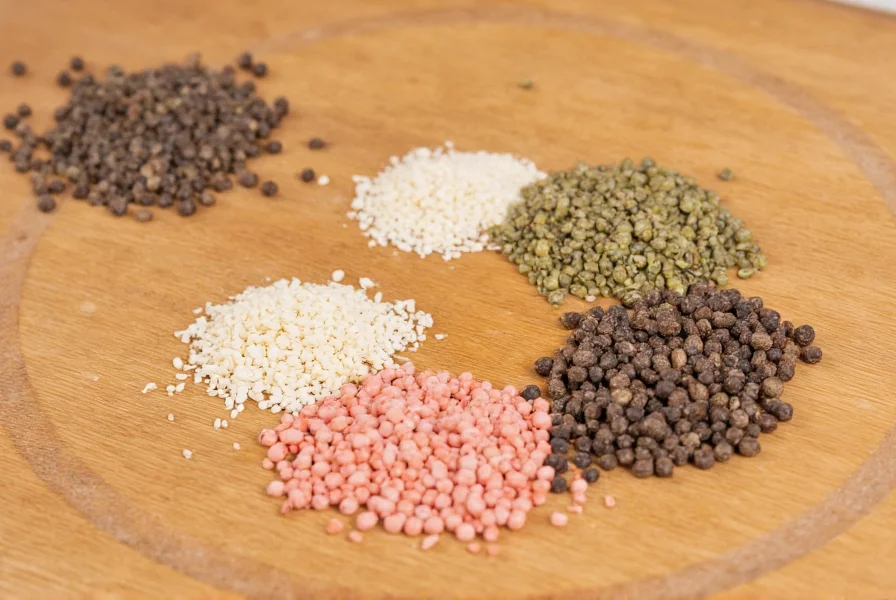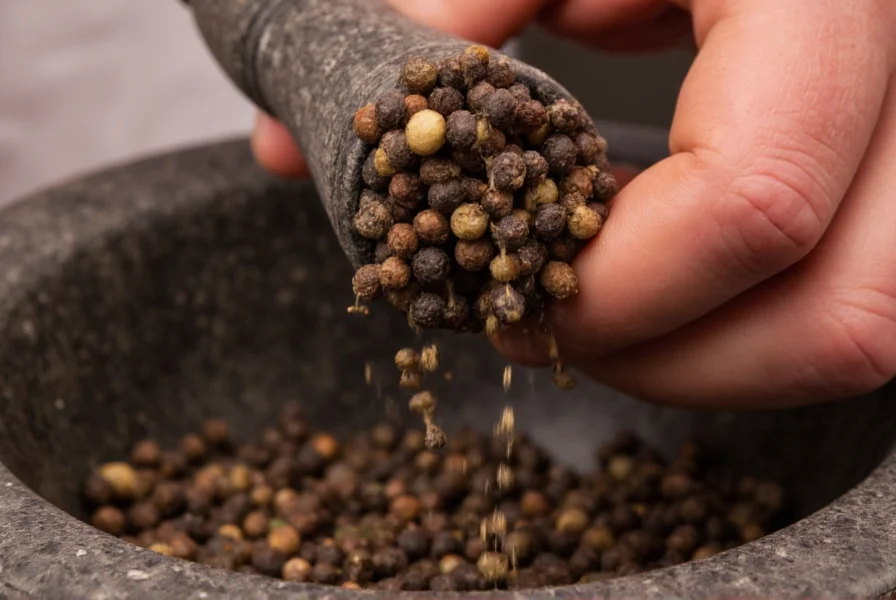Many home cooks and food enthusiasts search for ‘pepper corn’, mistakenly separating what should be a single term: peppercorn. This common error leads to confusion about one of the world’s most versatile spices. Understanding the true nature of peppercorns—their varieties, uses, and storage—can transform your cooking experience.
Understanding Peppercorns: Beyond the Common Misconception
Peppercorns aren’t actually corns or grains but rather the fruit of a flowering vine native to South India. The term ‘corn’ in historical spice terminology referred to small seeds or grains, which explains the naming confusion. Today, culinary professionals and spice enthusiasts recognize peppercorn as the correct single-word term for this essential kitchen staple.

Types of Peppercorns and Their Unique Flavor Profiles
The color variations in peppercorns result from different harvesting and processing techniques, each yielding distinctive flavor characteristics:
| Type | Harvest Method | Flavor Profile | Best Culinary Uses |
|---|---|---|---|
| Black Peppercorns | Unripe green berries, cooked and dried | Pungent, complex, earthy with floral notes | Most versatile; ideal for meats, sauces, and general seasoning |
| White Peppercorns | Ripe berries with outer skin removed | Milder, earthier, less complex than black | Light-colored dishes like cream sauces and potato salads |
| Green Peppercorns | Unripe berries preserved in brine or freeze-dried | Fresher, fruitier, less pungent | Asian cuisine, sauces, and dishes requiring subtle pepper flavor |
| Pink Peppercorns | Ripe berries from a different plant family | Sweet, floral, mildly peppery | Garnishes, fruit dishes, and finishing touches |
Culinary Applications of Different Peppercorn Varieties
Knowing how to use green peppercorns in cooking versus black can elevate your dishes significantly. Black peppercorns provide the classic pepper bite most people recognize and work well in robust dishes like stews, roasts, and grilled meats. Chefs often grind them fresh at the table for maximum flavor impact.
White peppercorns offer a more subtle heat that doesn’t visually disrupt light-colored dishes. Many professional kitchens use white pepper in béchamel sauces, mashed potatoes, and chicken dishes where black specks would be undesirable.
When exploring the difference between black and white peppercorns, remember that white pepper has a more earthy, less complex flavor profile due to the removal of the outer layer where many aromatic compounds reside.
Proper Storage Techniques for Maximum Freshness
The best way to store whole peppercorns involves keeping them in an airtight container away from light, heat, and moisture. Whole peppercorns maintain their potency for up to three years when stored properly, while pre-ground pepper loses its volatile oils within months.
For optimal flavor, invest in a quality pepper mill and grind peppercorns immediately before use. The aromatic compounds responsible for pepper’s distinctive flavor begin dissipating within minutes of grinding.

Peppercorn Substitutes and When to Use Them
When you find yourself without peppercorns, understanding peppercorn substitutes for recipes becomes essential. While no substitute perfectly replicates peppercorns’ complex flavor, several options work in specific situations:
- Pre-ground black pepper – Use 1:1 ratio but expect less complex flavor
- Cubeb berries – Similar heat with floral notes, use 3:4 ratio
- Long pepper – More complex and sweeter, use half the amount
- White pepper – In dishes requiring white pepper, use 1:1 ratio
For those exploring types of peppercorns and their flavors in depth, consider creating a tasting grid with small samples of each variety. Note the initial flavor, heat development, and finish of each type to develop your palate’s sensitivity to their nuances.
Shopping Guide: Selecting Quality Peppercorns
When purchasing peppercorns, look for these quality indicators:
- Uniform color within each variety
- Firm, heavy berries that feel substantial for their size
- Strong aroma when crushed between fingers
- Origin information – Tellicherry black peppercorns from India, Sarawak from Malaysia, or Lampong from Indonesia indicate specific quality grades
Avoid peppercorns that appear dusty, have inconsistent coloring, or lack aroma, as these indicate age or poor storage conditions. The highest quality peppercorns will have a complex flavor profile with notes beyond simple heat.
Frequently Asked Questions About Peppercorns
Are peppercorns and black pepper the same thing?
Yes, black pepper comes from black peppercorns. “Black pepper” refers to the ground spice, while “peppercorns” are the whole, dried berries before grinding. The terms are often used interchangeably, though technically peppercorns are the source of black pepper.
Can I substitute pink peppercorns for black peppercorns?
Pink peppercorns come from a completely different plant family and have a sweeter, floral flavor profile with only mild heat. They work as a visual substitute in finishing dishes but won’t provide the same pungency. Use them as a garnish rather than a direct replacement in recipes requiring black peppercorns’ heat.
Why do recipes specify whole peppercorns instead of ground pepper?
Whole peppercorns provide different flavor extraction than ground pepper. In pickling, marinades, or stocks, whole peppercorns release flavor more gradually and can be easily removed later. They also maintain their complex flavor compounds longer than pre-ground pepper, which loses volatile oils quickly.
Do different colored peppercorns come from different plants?
Black, white, and green peppercorns all come from the same Piper nigrum plant. The color difference results from harvest timing and processing methods. Pink peppercorns, however, come from a different plant (Schinus molle) in the cashew family and aren’t “true” peppercorns.
How can I tell if my peppercorns have gone bad?
Fresh peppercorns should have a strong, pungent aroma when crushed. If they smell dusty, musty, or have little aroma when crushed between your fingers, they’ve likely lost their potency. While they won’t make you sick, stale peppercorns provide minimal flavor and should be replaced for best culinary results.











 浙公网安备
33010002000092号
浙公网安备
33010002000092号 浙B2-20120091-4
浙B2-20120091-4